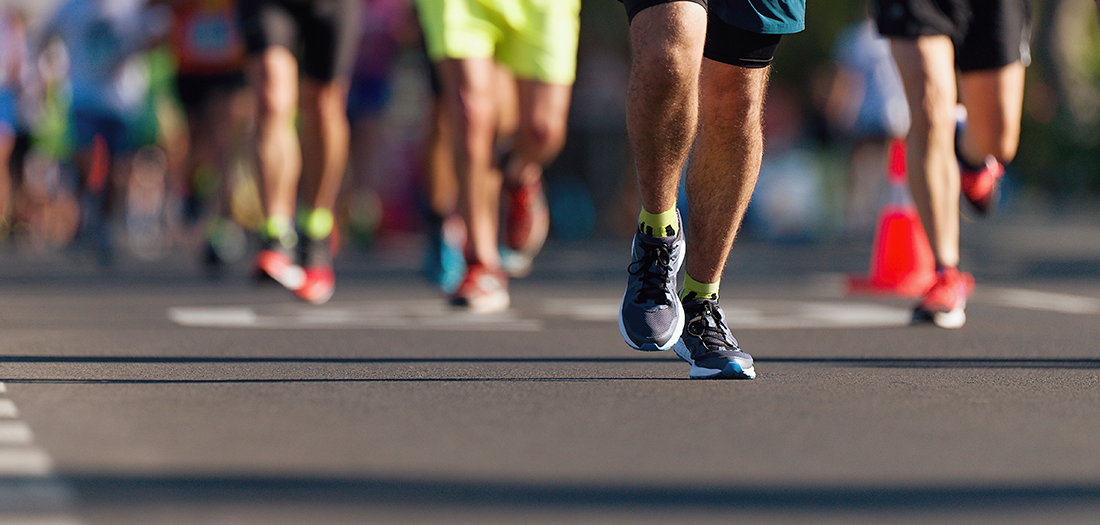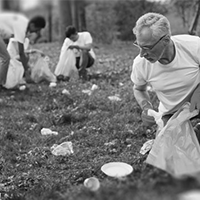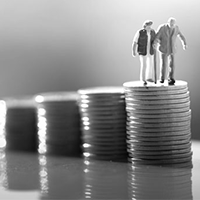 Contact
About Us
Articles
Home
Contact
About Us
Articles
Home

I turned 70 two years ago. And like many people who reach that milestone, I became the butt of quite a few good-natured jokes, most of which alluded to declining memory, diminishing eyesight, loss of hearing and, of course, the ebbing of sexual prowess.
My birthday cards humorously touched on each one of these (and a few I can’t mention), but it was those cards that congratulated me on reaching the age of 70 that got me to thinking about all that goes into surviving for seven decades. Primarily, it means I’ve managed to side-step a laundry list of potential dangers and diseases that were out there waiting to get me, including:
I also realized that I had little or no control over many of the hazards on that list. That fact had been confirmed 10 years earlier when I was blindsided by acute myeloid leukemia, the deadliest of the blood cancers, and it was reconfirmed four years later when it returned.
So, what does leukemia have to do with exercise, nutrition and aging? Simply this: If I hadn’t been a distance runner and developed healthful eating habits for many years before the disease, I likely wouldn’t have had to concern myself with aging. Instead, I would have joined the two-thirds majority of 60-year-olds who didn’t survive this disease for more than five years after treatment.
In other words, my well-conditioned heart and lungs made it possible for me to survive the harsh chemotherapy treatments that were required to keep me from dying. I always believed that running would keep me healthy and enable me to participate in the local 5K and 10K road races indefinitely, but I had no idea that someday it would help to extend my life.
My story is unique. Yours is, too. I have no blanket advice for anyone wanting to retire with health and happiness. But I do firmly believe that it will be difficult to be happy if you can’t do the things you want because of a broken-down body. I also believe that absent any debilitating diseases, anyone can find their unique path to a strong and healthy body.
I need to add that everything I have ever done – from running a half-marathon to training for a triathlon to starting a weight-lifting program – I did with the blessing of my family doctor and the hematologist who guided my cancer treatments. Luckily for me, both men are athletes and support my athletic endeavors. I hope you are as fortunate.
I always loved sports. Unfortunately, I was underweight, and five years of Little League baseball was the sum of my participation in organized team sports. Things stayed that way until basic training at Fort Knox, Kentucky, helped to fill me out and put on some muscle. But after all that training, I eventually eased back into a “normal” life of eating what I wanted and washing it down with my favorite beer. I was left with the extra weight but not much of the muscle.
I can’t remember exactly how old I was, but somewhere in my early 40s, I tried to lose weight and was successful, but it wasn’t until later that something sparked a real change in my attitude.
I’m sure my transformation began when I witnessed the aging of my Dad, a strong, broad-chested coal miner “without a lazy bone in his body,” as they said in the coal regions of Pennsylvania. Since I had inherited the small-boned features of my mother, I looked up to Pop as the pillar of strength and courage.
But that all changed when he retired. For him, retirement was going to be complete rest from all the rigors of a job that had provided him with little more than pain, danger, black lungs and a small paycheck. It was hard to blame him, but it was equally hard to watch him wither away as he sat in his easy chair and got wrapped up in soap operas.
In just a few years, walking to the kitchen for a snack became an arduous journey for Pop, and it was then I decided not to let that happen to me.
Let me preface everything I’m about to tell you by admitting that I hated running in high school, and I detested it when it was forced upon me in the Army. I wondered: How can an activity that makes your lungs burn and your legs ache be good for you?

But, despite my past bitter relationship with it, I began a running program. I bought an official Runners World logbook and started recording my daily mileage. I was 45 years old, and within a year, I would run my first road race. Unlike Forrest Gump, I never did stop running.
For anyone deciding to get off the couch, you will inevitably hear someone advise you to find an exercise you love so that you will be sure to continue with it. I don’t take exception to that advice, but I will add a bit of caution: You will need to be patient. Most people who have been sedentary for some time will not immediately fall in love with any intense physical activity. It takes weeks, even months, to get your body conditioned after beginning cardio or resistance (weight) training.
Another thing to keep in mind: Once you start to love an exercise, it probably means your body has adapted to it, and it isn’t doing you as much good as it once did. When that happens, you’ll need to ratchet up the intensity a bit and stop loving it so much!
Even though I was logging over 20 miles of running each week as I approached my 70th birthday, I had some annoying belly fat that I had been attributing to an age-related slower metabolism. While age is certainly partially responsible for it, I was not convinced that it was my fate to have a larger waistline as I got older.
I had joined a local gym recently and sought advice from one of the trainers. “You will not get rid of belly fat easily,” he informed me. “And you’ll never lose it if you don’t do weight training.”
That’s when I started the next phase of my quest for total fitness. I hired a trainer and began a program that involved working on more than just my cardiovascular system. He trained me on how to properly work the various muscle groups: shoulders, back, chest, biceps, triceps, abs and legs.
I learned how to do lunges and squats correctly, and I began doing a variety of exercises to build a strong chest. I found out the best ways to get bigger shoulders and arms. And the trainer taught me several ab workouts that I hate very much, which means they must be giving me some benefits.
I kept most of my running and other cardio activities for the days when I didn’t lift, but the belly fat was sticking around. I guess I’m a slow learner since I had missed one of the keys to any program designed to result in optimum health and fitness – my diet.
It pains me to admit this, but it is so true: You can’t exercise your way to a trim and fit body. OK, I’ve said it, but what does it mean? Simply stated, without the proper foods — both in type and quantity — you are not likely to get the results you’re hoping for from any exercise.
If you want to lose your belly fat, you need to take a three-pronged approach. Here is what I discovered:
You can find out how many calories you need each day to maintain your current weight by using one of the many calculators online. I prefer the one on Healthline, but any will do. After you determine that figure, you can create a plan for losing that extra weight.
For example: If the calculator tells you to take in 2,500 calories daily to maintain your weight, but you want to start losing a pound a week, you’ll need to be eating 3,500 fewer calories each week, which equals about a 1-pound weight loss. That’s 500 calories per day, so you should limit your daily calories to 2,000 (2,500 minus 500). You can easily track your calories on the myfitnesspal.com app or any other calorie counter.
As you can see, the process is not complicated. Make it uniquely yours. Be patient — if you are close to retirement or already there, you didn’t make it that far without learning patience. Don’t be afraid to join a gym. Believe me, no one will be judging you. They will respect and admire you for making an effort, and you’ll soon blend in.
If you can afford to hire a trainer for a few weeks, it will be well worth it. You’ll get extra encouragement, learn the correct techniques, and get some tips on nutrition.
There is absolutely nothing special about my journey to health and fitness in retirement. I have faith that practically anyone can take a similar path.
Alliance America is an insurance and financial services company. Our financial professionals can assist you in maximizing your retirement resources and achieving your future goals. We have access to an array of products and services, all focused on helping you enjoy the retirement lifestyle you want and deserve. You can request a no-cost, no-obligation consultation by calling (833) 219-6884 today.


